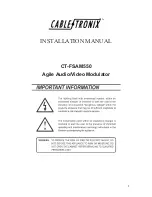
func
polyeval({6.177102005557
⁻
14,
⁻
3.724921779392
⁻
11,9.3224938547231
⁻
9,
⁻
1.239459227
407
⁻
6,9.2348545475962
⁻
5,
⁻
.0036542400520554,.075999519225692},ts)
Endfunc
solvebug() is a program that tries to find a solution t to the function vfts120(t) = vf, where vf is supplied
as an argument. vfts() calculates a 6th-order polynomial polynomial function of its argument ts. Some
typical values of vfts120(ts) near ts = 100 are
0.01613331366868
101
0.01613163512705
100.5
0.01612996896145
100
vfts120(ts)
ts
One way to test solvebug() solutions is to use a call like this:
solvebug(vfts120(t))
In general this expression should return a value near t. For example, if t = 100, this expression quickly
returns 100. But if we set t = 100.17, it takes longer to find the solution, and the "Questionable
Accuracy" warning appears in the display status line. However, the residual error is only about -6.6E-9,
so the solution is as good as can be expected with nSolve().
vfts120() is well-behaved in this area, and very nearly linear. I emailed TI-cares about this problem,
and here is their response:
"The evaluation of solvebug(vfts120(100.17)) results in the computation of nSolve(vfts120(t) =
vfts120(100.17),t) with computed bounds that keep the search in the neighborhood of t = 100.17. On the
Y= screen define y1(x) = vfts120(x) - vfts120(100.17). On the Window screen set the following window
dimensions
xmin = 100.17 - 1.2E-7
xmax = 100.17 + 1.2E-7
xscl = 1.E-8
ymin = -4.E-13
ymax = 4.E-13
yscl = 1.E-14
xres = 1.
Graph y1(x). The graph shows a greal deal of roundoff noise due to catastrophic cancelation. This roundoff
noise can also be seen by generating the Table corresponding to the Graph.
The roundoff error causes several apparent local maximums in the neighborhood of the reported solution.
These local maximums get very close to the x-axis; that is, they almost, but don't quite, produce sign
changes. To the nSolve algorithm these apparent local maximums so close to zero appear to be
"candidate" even-order solutions.
Floating point roundoff error can perturb a legitimate even-order solution so that the residual doesn't
change sign and doesn't quite reach zero. When such a residual is very-nearly zero, nSolve reports the
position as a "candidate" solution but also issues the "Questionable accuracy" warning. The computed
bounds affect the sequence of sample values, so they can strongly affect which solution or "candidate"
solution is approached and the number of steps (length of time) to settle on that solution. Since nSolve only
seeks one solution, it may report a "candidate" solution even when there is a nearby solution that DOES
have a sign change.
11 - 9
Содержание TI-92+
Страница 52: ...Component side of PCB GraphLink I O connector detail 1 41...
Страница 53: ...LCD connector detail PCB switch side 1 42...
Страница 54: ...Key pad sheet contact side Key pad sheet key side 1 43...
Страница 55: ...Key cap detail 1 44...
Страница 57: ...Component side of PCB with shield removed A detail view of the intergrated circuits 1 46...
Страница 59: ...Keypad rubber sheet key cap side Inside front cover showing keycaps in place Detail of a key cap 1 48...
Страница 410: ...void extensionroutine2 void Credit to Bhuvanesh Bhatt 10 4...
















































